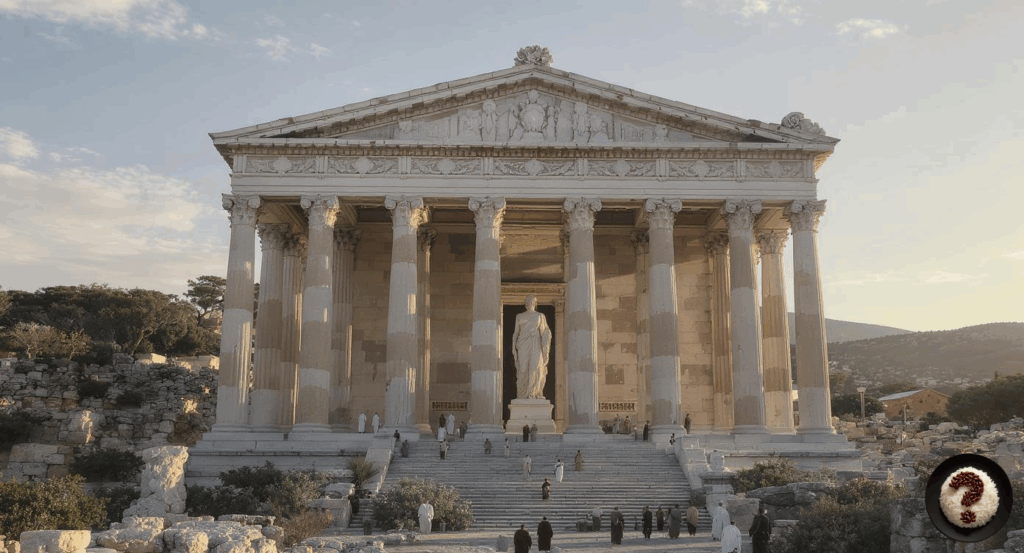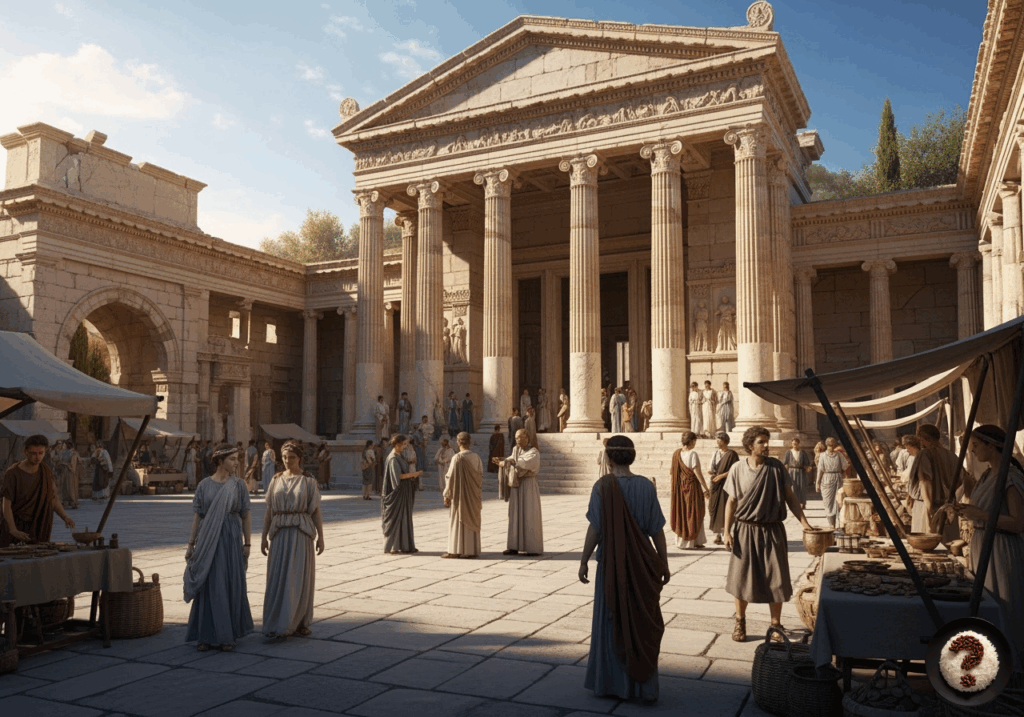
The Temple of Artemis: The Shopping Mall of the Ancient Era, The Goddesses’ Landmark!
If you had a time machine, which ancient structure would you choose to take Instagram Reels in front of? Machu Picchu, the pyramids, the Colosseum? No, no… Our advice is clear: The Temple of Artemis. Because 2,500 years ago, this was the only place in the Aegean region for someone to post a “story.” Yes, the Temple of Artemis in Ephesus was the ultimate “must-see” structure of its time, the perfect spot for “ideal lighting for a selfie.”
This massive structure built in the heart of the city of Ephesus was not just a temple; it was a cultural festival site that brought together faith, architecture, and ancient gossip. In today’s terms, it was a place of worship, a museum, and a social media filter all at once: simple yet striking, massive yet elegant, the home of the goddess yet the favorite of the public.
So, why was the Temple of Artemis so special? Because this temple was one of the most constructive gestures the Ancient Greeks made for women. The temple was dedicated to Artemis—the goddess of nature, childbirth, and the protector of women. In this context, we can say that the Temple of Artemis was history’s first “women’s solidarity platform.” #GoddessesAreStrongTogether
Completed in the 6th century BC, the structure was literally the type that “didn’t go overboard, but still dropped jaws.” It was crazily huge for its time. Its length reached 120 meters, and the number of columns was also around 120. Just imagine! Even today’s contractors, who have to plan plumbing measurements, would crack their fingers from the tension! It was an engineering show paved with stone!
Warning, spoilers ahead: The original temple is not standing today. In fact, the only remaining column stands there with the attitude of a model saying, “I was here, but it was too windy.” That’s because the temple was burned down by both the Persians and the infamous Herostratus, who said, “I didn’t study history in the library tonight, so I might as well burn something down.” (Yes, he burned it just to etch his name into history! You could think of him as the TikToker of that era.)

The Temple of Artemis was not only a religious center but also a social hub. People traded there, watched art, prayed, made wishes, and whispered from afar about who was flirting with whom. In other words, it was the perfect venue for both spiritual purification and scandalous enlightenment! Though it probably had a sign at the entrance saying, “Climbing the columns is forbidden.”
Over the years, many travelers and historians (the great-grandfathers of today’s travel bloggers) visited the Temple of Artemis and sang its praises. For example, an ancient Greek poet named Antipater said, “The glorious mountains, the Hanging Gardens of Babylon are beautiful, but after seeing the Temple of Artemis, the others remain like mere postcards.” We could say he posted a “my favorite” story.
When you visit the site in Selçuk today, your first feeling is, “Is this all there is?” Because, frankly, not much is left. But if you have a knowledgeable guide, you can close your eyes and, listening to the descriptions, easily imagine all those columns, the goddesses, and the priestesses. And yes, with a little effort, you can “restore the columns with the power of the mind.” A free tour benefit through mind exercise!
Just add this to your to-do list: Pose in front of the remaining column, but also leave some cat food nearby, just as the people of that time would. That’s because the one constant that everyone, including Artemis, loved around Ephesus is the cats! Perhaps they are the new guardians of the Temple of Artemis.
In conclusion: The Temple of Artemis is a great historical masterpiece that teaches the lesson of “how to show off with columns” and fits both architecture and faith into a single selfie pose. Despite how little remains today, it still stands and has such an energy that whoever sees it thinks, “If I were a bit richer, I would build a temple too.”
If your path takes you to Ephesus, Artemis might be waiting for you! Maybe not the goddess, but you’ll definitely make eye contact with one or two stray cats. Because some wonders are hidden not in the stone, but in the details.
Sources:
- UNESCO World Heritage List
- Ege University Archaeology Department Publications
- Antipater’s verses on the “Seven Wonders of the World”
- Selçuk Ephesus Museum information panel
